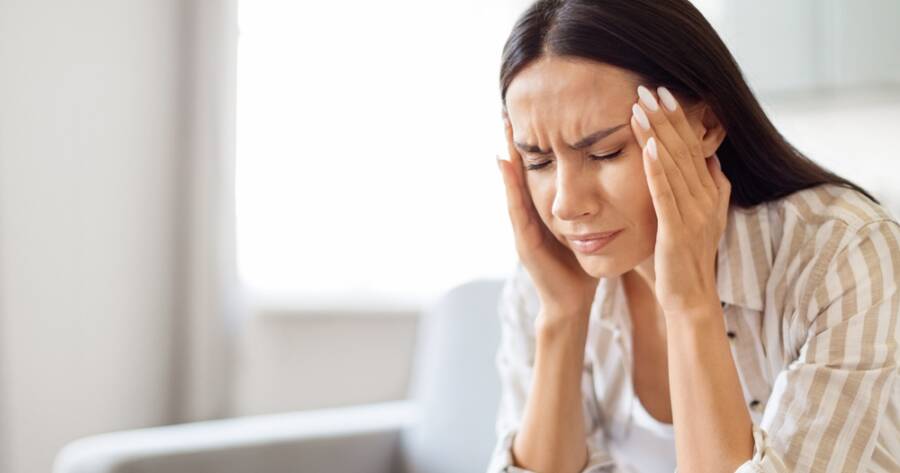Migraines can disrupt your day and affect your quality of life, but effective treatments are available to help manage the pain. From medications to lifestyle changes, discover the options that can bring relief and reduce the frequency of debilitating headaches.
Over-the-Counter Medications for Migraine Relief
For many migraine sufferers, over-the-counter (OTC) medications can provide significant relief. Common OTC options include pain relievers like ibuprofen (Advil, Motrin), aspirin, and acetaminophen (Tylenol). These medications help alleviate mild to moderate migraines by reducing inflammation and targeting pain signals.
Combination medications, such as Excedrin Migraine, which contains acetaminophen, aspirin, and caffeine, may also be effective for some individuals. While OTC medications are easily accessible and can provide quick relief, they are most effective when taken at the first sign of a migraine.
However, frequent use of OTC medications can lead to rebound headaches, where the overuse of pain relievers causes a cycle of recurring headaches. For those with occasional migraines, OTC medications can be a convenient and effective option, but it’s important to monitor usage and consult a doctor if migraines persist or worsen.
Prescription Medications for Migraines
When OTC medications aren’t enough to control migraines, prescription medications offer stronger and more targeted relief. There are two main types of prescription drugs for migraines: abortive and preventive. Abortive medications, such as triptans (sumatriptan, rizatriptan) and ergotamines, work by constricting blood vessels and blocking pain pathways to stop migraines once they begin. These are often prescribed to patients who experience moderate to severe migraines.
On the other hand, preventive medications are taken regularly to reduce the frequency and severity of migraines. These include beta-blockers, anticonvulsants, and certain antidepressants. Botox injections, commonly known for their cosmetic uses, are also an FDA-approved preventive treatment for chronic migraines. It’s important to work with a healthcare provider to determine which prescription treatment is best for you, as factors like the frequency and intensity of migraines will influence the recommended approach.
Lifestyle Changes and Natural Remedies
In addition to medication, lifestyle changes, and natural remedies may help reduce the frequency and severity of migraines. Identifying and managing triggers is a key step—common triggers include stress, poor sleep, certain foods, and dehydration. Keeping a migraine diary can help pinpoint patterns and avoid potential triggers. Regular exercise, staying hydrated, and maintaining a consistent sleep schedule are essential lifestyle adjustments that can improve overall health and minimize migraines.
Stress management techniques, including yoga, meditation, and deep breathing exercises, can reduce tension and may prevent stress-related migraines. Incorporating these healthy habits into your routine can complement medical treatments and offer long-term relief from migraine discomfort.
Massage for Migraines
Massage therapy may help alleviate migraine pain by reducing tension in the muscles and promoting relaxation. Migraines are often linked to stress and muscle tightness, particularly in the neck and shoulders. Regular massage sessions can improve blood circulation, relieve muscle stiffness, and lower stress levels, which may prevent or reduce the frequency of migraines.
A trained massage therapist can use targeted techniques to address specific tension points, helping to ease migraine symptoms. While massage isn’t a cure, it can be a useful complementary treatment for managing pain and improving overall well-being in those prone to migraines.
Natural Options to Treat Migraines
For individuals seeking natural ways to manage migraines, several options may help reduce the frequency or severity of headaches. Herbal supplements like feverfew and butterbur have been studied for their potential to relieve migraines by reducing inflammation and relaxing blood vessels.
Magnesium supplements are another popular option, as many migraine sufferers have low magnesium levels. Staying hydrated, maintaining a balanced diet, and engaging in regular exercise can also support long-term migraine prevention. These natural methods, combined with healthy lifestyle choices, may help some individuals manage migraines without relying heavily on medication.
Alternative Medicine to Consider
Alternative medicine, including practices such as acupuncture, offers promising relief for those suffering from migraines. Acupuncture involves inserting thin needles into specific points on the body to stimulate energy flow and reduce pain. Some studies suggest that regular acupuncture sessions may lower the frequency and intensity of migraines by improving circulation and releasing natural painkillers, such as endorphins.
Other alternative therapies, like chiropractic care or biofeedback, may also provide relief by addressing underlying issues such as spinal misalignment or stress. While alternative treatments vary in effectiveness, they can complement traditional migraine management strategies for those seeking non-pharmaceutical options.
New and Emerging Treatments for Migraines
Recent advancements in migraine treatment have introduced new options that offer hope to those with chronic or severe migraines. One of the most notable breakthroughs is the use of CGRP (calcitonin gene-related peptide) inhibitors, such as Aimovig, Ajovy, and Emgality. These drugs work by blocking the protein CGRP, which is involved in migraine attacks.
CGRP inhibitors are designed for patients who experience frequent or severe migraines and can be used as both abortive and preventive treatments. Additionally, non-invasive devices like transcranial magnetic stimulation (TMS) and external trigeminal nerve stimulation (e-TNS) offer drug-free alternatives by delivering magnetic pulses or electrical impulses to areas of the brain involved in migraines. These devices can be used at home and provide an option for those who prefer non-medication treatments. As research continues, new treatments offer promise for improving the quality of life for migraine sufferers.
Learn More About Migraine Treatments
Managing migraines can be challenging, but with a variety of treatment options available, relief is possible. From over-the-counter and prescription medications to lifestyle changes and innovative treatments like CGRP inhibitors, there are solutions tailored to different needs.
Understanding your triggers and working with a healthcare provider to explore the best treatments for your specific situation can significantly reduce the frequency and severity of migraines. Whether you’re seeking immediate relief or long-term prevention, staying informed about the latest migraine treatments can help you take control and improve your quality of life.
